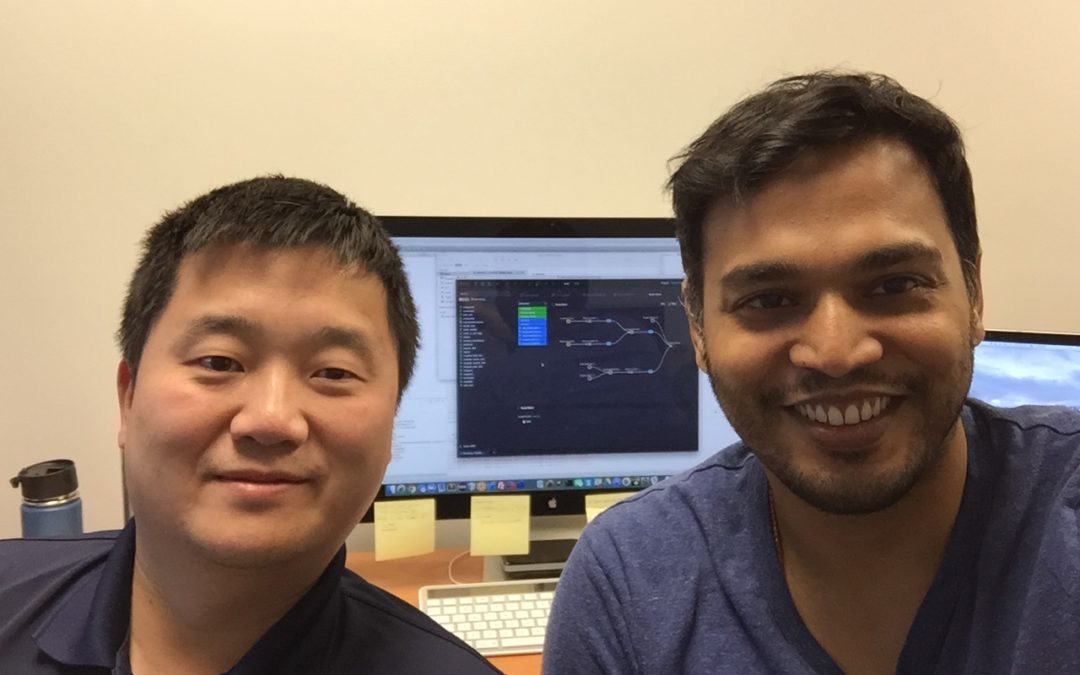by Jonathan Giles | Jun 26, 2016 | Links
Apologies for missing last week, I was sick and didn’t really feel like bringing myself to the computer. I probably missed some news in the past week, so apologies if I missed your news. Let me know and I’ll include it next week.
by Jonathan Giles | Jun 5, 2016 | Links
A quieter week this week, which suits me just fine as I’m supposed to be on holiday today! Anyway – keep up all the hard work folks and enjoy the links from the community 🙂

by Jonathan Giles | May 18, 2016 | Interviews
It’s been a long time since my last interview, but today I have an interview from Tai Hu and Ajo Abraham, who are working on some cool stuff that I wanted to share.
Hi guys – could you please introduce yourselves to the readers?
Sure, my name is Ajo and I founded Vero Analytics 2 years ago to make data prep easier for people, especially business analysts. Before that, I worked in big data and analytics for over 10 years at companies like Netflix, Google, and eBay.
And, I’m Tai Hu CTO of Vero Analytics. I’ve been developing Java applications for 2 decades at various companies in the Washington DC area. I also worked at Oracle which was a great experience.
So you’ve been working on your Vero Designer product for a few years now. What does Vero do?
Essentially, Vero allows you to drag and drop your way into a finely prepared dataset. You need well organized datasets to efficiently use visualization tools like Tableau, Qlik, and Microsoft Power Pivot. You also need enriched datasets to use in downstream Marketing automation tools. Right now the major options are bloated ETL (extract, transfer, load) software that are difficult to use or you have to hire data engineers. Neither are good options for many business teams, especially since ETL tools still require a great proficiency SQL and other programming paradigms.
With Vero you can wrangle and load data into databases, blend data across data sources, build complex data flows, and finally export data into target tables. No coding required. Vero does the query generation, the data transformation, and the data movement all without any code from the user. It is so effective and priced well that we have people now who are programmers using Vero. They are doing this because Vero saves them time when dealing with the pain that is data prep. We are currently working on exciting new exports including the ability to post data to any Rest end point. I think our users are going to love this. The use cases are endless. Email automation, advertising automation, customer on boarding etc.
Who do you think would benefit from your product?
Its really a cross functional application. Data is so pervasive now a days there are many categories of users. We mainly see Business Analysts, Business Intelligence developers, Visualization developers, and data engineers using our tools. Our customer industries span everything from Entertainment to Hospitality.
You built Vero with JavaFX – how did you find working with it?
Tai can speak to this better than I can.
SceneBuilder and CSS support are two major factors that brought us to JavaFX. Overall we had a very positive experience with JavaFX. I used to be a Swing developer and JavaFX property binding makes it a lot easier to keep model and UI in sync. Also JavaFX concurrency package allow us to create responsive UI without worrying about threading issues.
Did you always plan to use JavaFX? What motivated you to choose JavaFX over other technologies?
No. We looked at lots of options to make development fast. Options like node-webkit, Electron, Chrome Apps were all considered. Our plan all along was to build a desktop app, but originally thought a web tech environment would be better. In someways we still think that, since there are more web devs out there and a lot more community support. However, Java and JavaFX gave us two things that outweighed these concerns. Performance and JDBC. We rated our needs of both performance and jdbc connectivity to be paramount and that pretty much drove the decision. Besides that we really wanted to build a highly stylized UI that makes data approachable. JavaFx gave us that and we are so far happy with it.
I’ve heard you’ve had some amazing interest in your product already. First of all – congratulations. Secondly, can you speak more about who is using your app, and how they benefit.
Yes, definitely. The notable customers are Netflix and Mozilla. We are thrilled to have them as customers and we are very proud of that achievement. We launched our true MVP back in February of 2016 so this was great. Right now we are doing a project with Netflix to download and load data from any JSON end point into MySQL (we will also support Postgres and RedShift) using Vero. For the sake of full disclosure, Netflix is using our product to help with their internal app analytics not the massive datasets related to streaming.
Have you made use of any open source libraries or benefitted from the JavaFX community in any way? What are you feelings on Java on the client, and the community around it?
Yes, we used a couple of JavaFX open source libraries, such as DataFX, ControlsFX, and FontAwesomeFX. Those libraries definitely provide us a lot of quality widgets and icons. Overall we had a positive experience with Java desktop technology. However comparing to Web techonologies, JavaFX community has a way to go. I hope us being out here and being successful will motivate people. We also want to contribute and will do so as we grow.
How can the JavaFX community help?
Tell your buddies who are business analysts, business intelligence developers, or data engineers about Vero. While we have a few customers we still got a bit to go before we can be successful. We’ll take whatever help we can get :).
I’ve seen a few videos you’ve created that demonstrate Vero. Do you have one or two that you’d like the readers to watch?
Our awesome RedShift file loading demo and our super data blending demo.
Thanks for your time today. Did you have any final comments?
We want to thank the entire JavaFX community for their continued effort in making JavaFX a great client side platform. Certainly want to thank you for FXexperience and other folks for their contributions. Desktop apps are not going away and I think JavaFX has a great future as long as we push the boundaries.
by Jonathan Giles | Apr 24, 2016 | Links
It’s a public holiday here in New Zealand today, so I’ll be keeping this brief. Nonetheless – enjoy! 🙂
- This week Adam Bien is presenting at the Silicon Valley JavaFX Users Group about ‘MVC, DI with JavaFX with 3 Classes’. If you are local, you can attend in person, but if you aren’t, it is also live streamed.
- Dirk Lemmermann has posted another in his series of JavaFX missing features, this time discussing CSS.
- Jens Deters has a blog post about ‘Button of Choice: Use ToggleButtons as RadioButtons’.
- Edvin Syse has posted a video titled ‘Type safe JavaFX CSS with TornadoFX‘.



